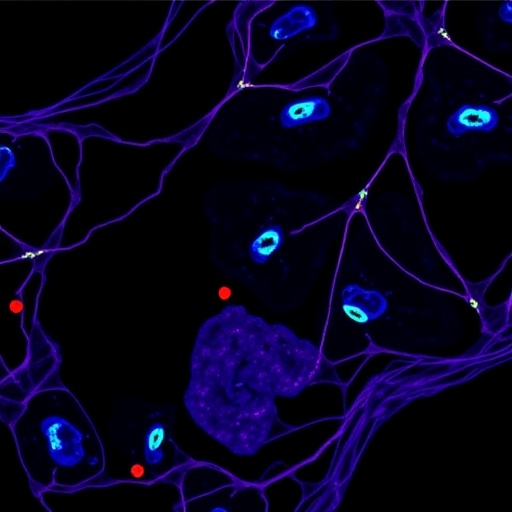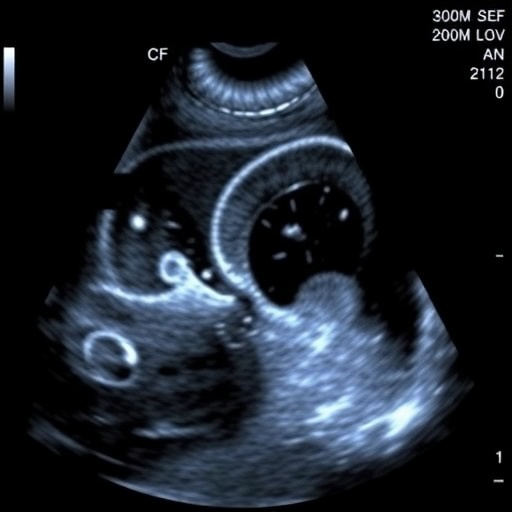A groundbreaking advancement in cancer research has emerged with the development of a novel multi-omics tool designed to unravel the complex genetic and transcriptional landscape of individual cancer cells. Scientists at Weill Cornell Medicine, in collaboration with researchers from the University of Adelaide, have introduced GoT-Multi, a cutting-edge successor to their pioneering GoT (Genotyping of Transcriptomes) technology. This innovation is poised to revolutionize how oncologists and molecular biologists understand tumor evolution and drug resistance mechanisms at an unprecedented single-cell resolution, enabling comprehensive gene mutation tracking alongside gene expression profiling.
The new technology, GoT-Multi, is a formidable leap beyond its predecessor, enabling the simultaneous detection of numerous gene mutations while also monitoring the transcriptomic activity within the same individual cells. By overcoming prior limitations—most notably the inability to analyze formalin-fixed, paraffin-embedded (FFPE) pathology samples—GoT-Multi vastly expands the scope of cancer specimens accessible for in-depth study. These FFPE samples constitute an immense archive in clinical pathology departments worldwide, encapsulating invaluable clinical history that has largely been inaccessible with single-cell multi-omics methods until now.
The significance of GoT-Multi was powerfully illustrated through its application to chronic lymphocytic leukemia (CLL), a typically indolent blood cancer that can undergo a dramatic and often fatal transformation into a highly aggressive lymphoma subtype, known as Richter Transformation. The research team applied GoT-Multi to tens of thousands of individual malignant cells from patient tissue samples, identifying more than two dozen specific gene mutations within single cells and concurrently mapping their gene expression profiles. This dual-layered approach provided a comprehensive view of how mutational changes intersect with cellular behaviors—such as proliferative activity and inflammatory responses—during malignant progression.
This capability to dissect tumor heterogeneity at an extraordinary resolution unveils the dynamic cellular states within evolving cancers. Cells exhibiting hyperproliferation or inflammatory phenotypes were readily classified and correlated to their genetic alterations, revealing pathways involved in treatment resistance and aggressiveness. The implications of understanding these cellular subpopulations are profound, offering potential biomarkers for early detection of transformation events and rational targets for therapeutic intervention that precisely address the malignant subclones resistant to conventional therapies.
The development of GoT-Multi was spearheaded by Dr. Anna Nam, whose leadership in pathology and laboratory medicine has established her as a key figure in precision oncology. The tool’s conceptual and technical foundations originated during her postdoctoral tenure under Dr. Dan Landau at Weill Cornell Medicine, a noted expert in cancer genomics. Together, they laid the groundwork for single-cell genotyping integrated with transcriptomics, setting a foundation that GoT-Multi has robustly expanded upon with enhanced mutation detection capacity and sample versatility.
A defining technical advancement of GoT-Multi lies in its multiplexing capacity—allowing researchers to concurrently genotype multiple loci across the genome while capturing the cell’s transcriptomic profile. This multi-omics integration eliminates the need for separate assays, reducing variability and preserving the integrity of biological signals inherent to each cell. The system leverages state-of-the-art sequencing technologies and computational frameworks to accurately phase mutations and interrogate gene expression patterns linked to neoplastic progression and therapeutic escape.
The research consortium’s decision to focus initially on hematologic malignancies, particularly treatment-resistant lymphomas, represents a strategic choice reflecting the urgent clinical need to understand and counteract therapy failure. By applying GoT-Multi to large cohorts of lymphoma biopsies, they aim to systematically profile the cellular ecosystem underlying resistance, potentially uncovering conserved molecular pathways that can be exploited to design next-generation targeted therapies. These investigations also extend to precancerous states, providing a continuum view from early neoplastic lesions through to fully transformed and resistant tumors.
Beyond its scientific and clinical implications, GoT-Multi underscores the power of integrating advanced technological innovation with rich clinical samples to push the boundaries of cancer biology. The ability to study archival FFPE specimens opens vast retrospective research possibilities, linking genetic and transcriptomic alterations to long-term patient outcomes and therapeutic histories. Consequently, this technology offers a transformative platform for longitudinal studies and real-world data integration that were previously unfeasible.
Importantly, the cross-institutional collaboration between Weill Cornell Medicine and the University of Adelaide exemplifies the global synergies necessary for tackling complex biomedical challenges. The synthesis of expertise spanning pathology, molecular biology, oncology, and bioinformatics has yielded a robust tool that not only enhances our mechanistic understanding of cancer transformation but also serves as a beacon for the future of personalized medicine.
The GoT-Multi platform is poised to catalyze a new era of precision diagnostics, providing clinicians with granular insights into tumor evolution and empowering them to tailor interventions based on the unique mutational and transcriptional landscape of a patient’s cancer. As the field moves toward integrating single-cell multi-omics into routine clinical workflows, the translation of these insights holds the promise of improved prognostication, more effective therapies, and ultimately, better patient outcomes.
Looking forward, the research team is expanding the scope of their investigations, applying GoT-Multi across diverse tumor types and exploring its utility beyond oncology, such as in autoimmune diseases and developmental disorders. The adaptability of the platform to various tissue preparations and its scalability positions it as a versatile tool for broad biological and clinical research applications.
In conclusion, GoT-Multi represents a formidable advance in cancer genomics, uniting genotyping and transcriptomics in a single, scalable assay compatible with real-world clinical samples. By illuminating the molecular intricacies of cancer progression and drug resistance at the single-cell level, this technology sets the stage for transformative discoveries and fosters a new paradigm in precision oncology research and patient care.
Subject of Research: Genotyping and transcriptomic profiling of cancer cells using single-cell multi-omics technology to investigate cancer progression and treatment resistance.
Article Title: Cancer Progression Illuminated by New Multi-Omics Tool
News Publication Date: 10-Oct-2025
Image Credits: Courtesy of the Nam Lab
Keywords: Pathology, Cell pathology
Tags: cancer progression analysischronic lymphocytic leukemia researchcollaboration in cancer researchdrug resistance mechanisms in cancerFFPE pathology sample analysisgene mutation tracking in tumorsGoT-Multi technologymulti-omics tool for cancer researchovercoming limitations in cancer samplessingle-cell resolution in oncologytranscriptomic activity monitoringWeill Cornell Medicine advancements





